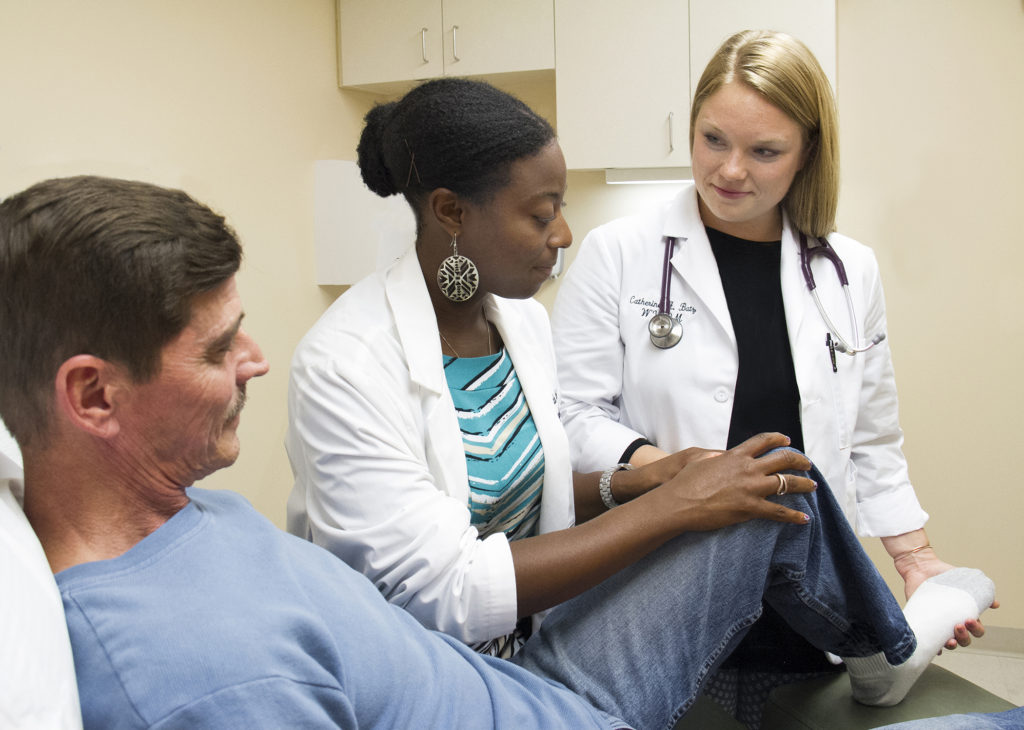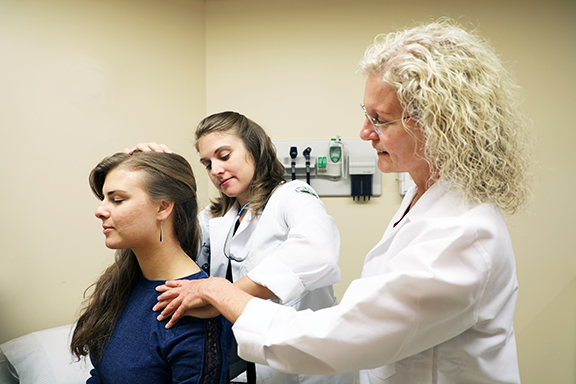By Ken Bays
In many small college towns, the bond between students and the surrounding community is a close one, with the school serving as a significant thread in the fabric of the neighborhood. That’s certainly the case in Lewisburg, WV, where the West Virginia School of Osteopathic Medicine (WVSOM) offers a number of programs that encourage medical students to take an active role in their community, and, in turn, encourage local residents to become involved with the school.
One of those programs is WVSOM’s annual Student Osteopathic Manipulative Medicine (OMM) Clinic, which provides osteopathic evaluations and manipulative treatment to community members at no cost.
The school is currently hosting its second OMM clinical session of 2020, which started on February 13 and will run until March 13. The clinic is held at WVSOM’s on-campus Clinical Evaluation Center, which is also home to the institution’s state-of-the-art simulation program. Through the clinic, community members volunteer to be seen and treated by first- and second-year osteopathic medical students working under the supervision of a physician. It’s a mutually beneficial relationship, with students gaining the kind of real-world experience lectures can’t provide and patients receiving osteopathic manipulative treatment.

Used to assist in diagnosing and treating musculoskeletal problems and medical illnesses, osteopathic manipulative treatment is a set of techniques that involves stretching, placing pressure on or otherwise manipulating a person’s muscles and joints. While osteopathic students are trained in the same broad range of medical techniques as non-osteopathic, or allopathic, medical students and undergo the same residency training programs as other doctors, the Student OMM Clinic focuses on manipulative treatment.
Jessica Smith-Kelly, D.O., a WVSOM assistant professor of osteopathic principles and practice who coordinates the clinic, says students gain as much from the event as the patients who receive treatment.
“Our students spend almost two years in the classroom learning to treat a variety of musculoskeletal dysfunctions. The clinic gives them an invaluable opportunity to use these skills,” she says. “Our students have the chance to practice on each other in labs, but because most of them don’t have true somatic dysfunctions, the clinic gives them something they can’t get in class. There’s no better experience than hands-on training, so we’re always grateful to participants for using their time to help advance WVSOM students’ knowledge.”
Patients who participate in the program often find it personally rewarding, with many reporting that they’re pleased to have played a part in educating aspiring physicians.
“I enjoyed my experience at the clinic,” says Gail Serdoz, a past participant. “The students were well prepared and knowledgeable. Their skills and comfort level increased each week. It was a pleasure to contribute to such a valuable learning experience and to learn about osteopathic medicine.”

Juanita Robertson, who has served as a patient at the clinic multiple times, says she appreciates the individualized attention she receives during the annual clinic.
“I have been a volunteer for the Student OMM Clinic for years. Each and every time I have been treated with respect and kindness,” says Robertson. “The student doctors have been professional and thorough. I have found they are able to spend more time treating my ailments than most doctors and have improved each time.”
About the Author
Ken Bays is an editor and writer in the marketing and communications Department at the West Virginia School of Osteopathic Medicine. He can be reached at kbays@osteo.wvsom.edu.








